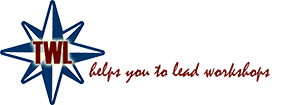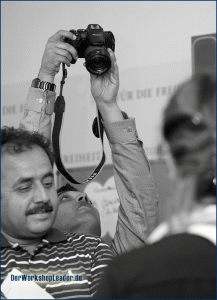The time is always right to do what’s right.
Martin Luther King Jr. (1929—1968)
American Civil Rights Activist
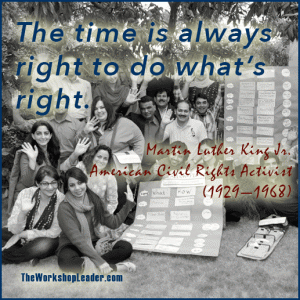
Every facilitation needs post-processing. By this, we don’t mean the logistics after the event [see Event Management] but the content. Training sessions aim at increasing awareness and knowledge, but crucially they also seek to change behaviour.
Change based on a workshop is much less effective than we might wish. It requires a continued investment in time, support and motivation. Repetition and reminders are necessary. The better the content of a moderation is remembered, the higher the chance that participants will experiment with it and use it in their daily lives.
Certificate
If a seminar, training session or workshop is of high quality and is well received, and if the managing organisation has a good reputation, participants like to be given a certificate — out of pride, positive emotions and for their career, as it may look good on a CV.
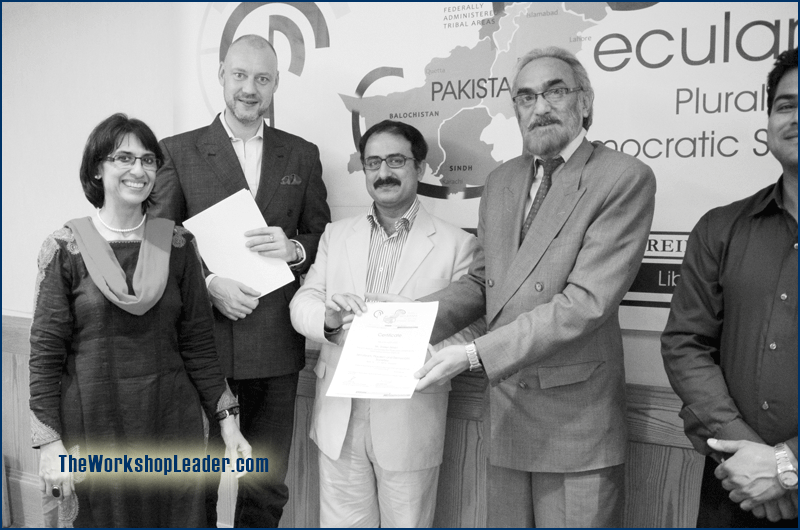
Besides giving you the chance to brand your organisation, we found it useful to state briefly the key things that the participant should have taken away from the workshop. This helps the participant to remember the content and it helps other organisations, especially the Human Resources Department, to have an idea what a participant has been taught.
When you are designing your certificate, don’t forget the formalities:
- Your logo
- Name of the participant.
- Content of the workshop or training session.
- Date & Place
- Signature and job title.
As member of the TWL Leadership Circle you will find a sample here, which you can modify according to your own needs and wishes.
You can either present the certificate in a hand-over ceremony at the end of the workshop or you can send it later together with other materials like handouts and presentations.
Handouts, Presentations & other post-processing Materials
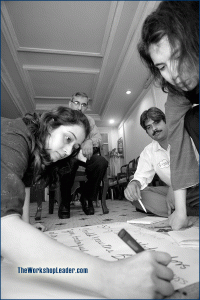
Whatever material was used during the training session should be made available to the participants. Handouts are often left somewhere in the room and can be easily mislaid after lots of games and energisers. Clearly the main focus of participants should be on the content of presentations, so by telling them at the beginning that you will send a transcript of the presentation later they will not be forced to take notes (though they can if they want to and you should let them as everybody has a different way of learning). Often there is extra learning material — a story you read out or a template you used — and this should be sent to all participants.
We have often found it useful to burn a DVD, especially if film recording is part of the training. In addition, you could add photos of the day. These nice souvenirs help create positive emotions and can contribute to jogging the memory and helping participants to reengage with the content. A DVD provides yet another chance to brand your organisation so it is a good idea to design a case and label for the DVD. This is also a good idea because you want to leave your participants with positive memories and not searching through unlabelled DVDs, which is time consuming and tedious.
Photo Protocol
Our memory is often very visual. While handouts and other material can be prepared in advance, moderation output evolves during the workshop and it is far more enjoyable to read text when it is accompanied by pictures. Therefore, a photo album with pictures taken during the workshop is a good way of post-processing in order to create visual reminders of the content of workshop. Follow the tips below:
It is best to take pictures of flip charts and boards in the course of the seminar. Take photos with flash — it is better for the white balance and has a higher contrast. Aim your camera of the centre of the flip chart or board to avoid perspective distortion.
- Choose a close crop and cut even more on your computer later. The frame of the flip chart and the rest of the seminar room are not interesting — the content is!
- To make your work easier on the computer later make sure that the camera is always turned in the same direction for vertical shots.
Don’t forget to take action shots of the participants. Don’t forget one person and take 20 shots of another.
It’s also useful to have a few images of the seminar hotel and the surroundings. The best is to have something representative as a title photo, and this could also be a group photo.
Downsize your photos using photo software. Aim to have around 30 high-resolution photos, which will be around 4 GB each. Together with the text, the entire file will then be around 120 GB. You should format the photos to be 72 pixels and a reasonable size of about 15 cm height.
Write some engaging content to accompany the images and place the photos next to the relevant section of text.
It is necessary to include a cover page with your organisation’s logo (another opportunity for branding!), the title of the event, the dates and place as well as the moderator’s name and photo.
At the end you could give additional information including links, further reading, copies of interesting articles and additional worksheets.
You should ideally produce prints of the photos and have them bound as participants are less likely to read it on the screen but are quite likely to leaf through a little booklet.
Follow-ups
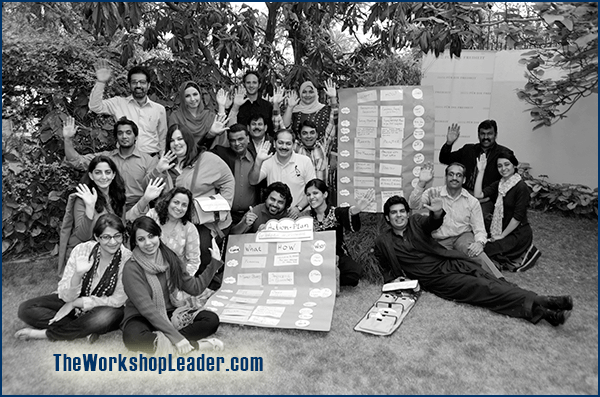
The best means of repeating and enhancing the effect of the training is to follow up with an action plan. You can call participants and ask how they are and if they have advanced in their action plan. Have they had any additional relevant experiences? Have they implemented some of the things that they learnt into their daily life? A phone call like this shows that you care and that you have a real interest in their development.
Additionally, you should invite the participants, depending on the aptitude, commitment and dedication, to further seminars and workshops.
Another important part of post-processing is the Letter to Myself [see Games]. Don’t forget to send it. It is best to mark it in your diary.
Personal Post-Processing
Are you satisfied with your moderation or your workshop? Have you reached all three goals (content, process, personal)? How was the feedback? The answers provide an excellent opportunity for self-improvement! You can work to improve your weaknesses for the next event!
Every workshop plan needs adaption. Remember the planning process! Reviewing is your workshop plan is part of post-processing. Have you noted down the timings? Did you change your methods as you went along — and if so, why? Directly after the workshop you should work out an amended version of your workshop plan. This will mean that you are better prepared for the next time and are able to provide greater value to the participants!
